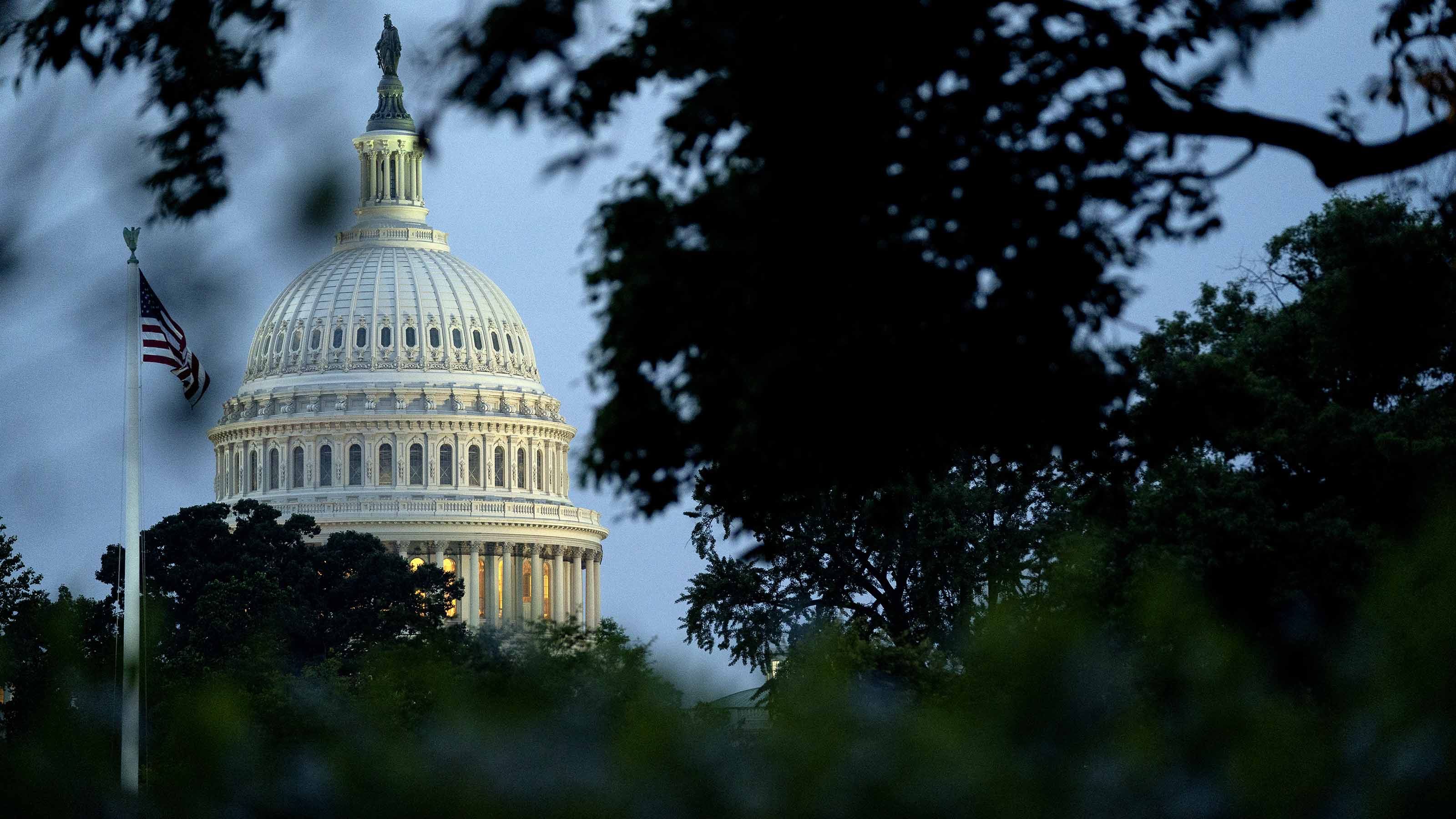China's Economy Faces Darkening Outlook
What the slowdown in China means for U.S. businesses.

To help you understand what's happening in commercial real estate and what we expect to happen in the future, our highly experienced Kiplinger Letter team will keep you abreast of the latest developments and forecasts (Get a free issue of The Kiplinger Letter or subscribe). You'll get all the latest news first by subscribing, but we will publish many (but not all) of the forecasts a few days afterward online. Here’s the latest…
Just how badly is China’s economy doing? And what does that mean for everyone else?
Long a juggernaut, China is clearly slowing. It will likely miss its 5% GDP growth target for this year, coming in at around 4.8%. As enviable as that may sound to advanced economies, it’s slow by China’s standards. It’s also remarkable for growth to come in below Beijing’s official goal — a rare failure to live up to what the Communist Party has dictated. Chinese manufacturing is still contracting. Foreign investment is poised to actually fall for the first time in China since 1990, if not earlier. Consumers are skittish and not spending.
From just $107.88 $24.99 for Kiplinger Personal Finance
Become a smarter, better informed investor. Subscribe from just $107.88 $24.99, plus get up to 4 Special Issues

Sign up for Kiplinger’s Free Newsletters
Profit and prosper with the best of expert advice on investing, taxes, retirement, personal finance and more - straight to your e-mail.
Profit and prosper with the best of expert advice - straight to your e-mail.
The root of China’s woes is a real estate bust that hit a few years ago and is nowhere near bottom. Unlike in the U.S., where house prices are up sharply since the pandemic, boosting household wealth. Chinese households have lost $18 trillion as the value of their homes has fallen. In China, property is the middle class’s preferred asset to own, whereas Americans are more financially diversified.
There’s probably not much Beijing can do to really turn the economy around. So far, it’s mostly relying on monetary stimulus, lowering borrowing rates, allowing smaller down payments on homes, making more cash available to borrow, etc. It may soon announce new spending programs, too. All of this seems like a stopgap.
One thing you can expect from China’s familiar playbook: Leaning on exports, which are up by double digits this year, though not enough to reach the 5% GDP goal. Encouraging exports also lifts demand for raw materials, boosting commodity prices.
The rising tide of cheap Chinese exports is intensifying global trade conflicts, leading to more tariff barriers targeting Chinese goods. Canada just levied a 100% tax on Chinese electric vehicles, plus 25% duties on Chinese steel and aluminum imports. The European Union may soon follow suit on EVs, with a tariff rate of up to 35.5%. Either U.S. presidential candidate is bound to impose additional tariffs on China: Donald Trump, more broadly, Kamala Harris, in a more targeted way. Each of them would cite not just unfair economic competition but also national security concerns.
U.S. importers are already diversifying away from China, whose products now make up 15% of imports here, down from 21% in 2018. Businesses that relied on cheap Chinese goods will have less access to them. Ditto for U.S. consumers, for whom cheap Chinese products took some sting out of inflation. In the long run, though, it could also give American manufacturers a shot to regain market share.
Look for relations between Beijing and Washington to continue to worsen — over trade and more — as China struggles to reboot its export-driven economic mode
This forecast first appeared in The Kiplinger Letter, which has been running since 1923 and is a collection of concise weekly forecasts on business and economic trends, as well as what to expect from Washington, to help you understand what’s coming up to make the most of your investments and your money. Subscribe to The Kiplinger Letter.
Related stories
Profit and prosper with the best of Kiplinger's advice on investing, taxes, retirement, personal finance and much more. Delivered daily. Enter your email in the box and click Sign Me Up.

Rodrigo Sermeño covers the financial services, housing, small business, and cryptocurrency industries for The Kiplinger Letter. Before joining Kiplinger in 2014, he worked for several think tanks and non-profit organizations in Washington, D.C., including the New America Foundation, the Streit Council, and the Arca Foundation. Rodrigo graduated from George Mason University with a bachelor's degree in international affairs. He also holds a master's in public policy from George Mason University's Schar School of Policy and Government.
-
 Original Medicare vs Medicare Advantage Quiz: Which is Right for You?
Original Medicare vs Medicare Advantage Quiz: Which is Right for You?Quiz Take this quick quiz to discover your "Medicare Personality Type" and learn whether you are a Traditionalist, or a Bundler.
-
 Ask the Editor: Capital Gains and Tax Planning
Ask the Editor: Capital Gains and Tax PlanningAsk the Editor In this week's Ask the Editor Q&A, Joy Taylor answers questions on capital gains tax rates and end-of-year tax planning
-
 Time Is Running Out to Make the Best Tax Moves for 2025
Time Is Running Out to Make the Best Tax Moves for 2025Don't wait until January — investors, including those with a high net worth, can snag big tax savings for 2025 (and 2026) with these strategies.
-
 The AI Boom Will Lift IT Spending Next Year
The AI Boom Will Lift IT Spending Next YearThe Kiplinger Letter 2026 will be one of strongest years for the IT industry since the PC boom and early days of the Web in the mid-1990s.
-
 Shoppers Hit the Brakes on EV Purchases After Tax Credits Expire
Shoppers Hit the Brakes on EV Purchases After Tax Credits ExpireThe Letter Electric cars are here to stay, but they'll have to compete harder to get shoppers interested without the federal tax credit.
-
 Amid Mounting Uncertainty: Five Forecasts About AI
Amid Mounting Uncertainty: Five Forecasts About AIThe Kiplinger Letter With the risk of overspending on AI data centers hotly debated, here are some forecasts about AI that we can make with some confidence.
-
 Worried About an AI Bubble? Here’s What You Need to Know
Worried About an AI Bubble? Here’s What You Need to KnowThe Kiplinger Letter Though AI is a transformative technology, it’s worth paying attention to the rising economic and financial risks. Here’s some guidance to navigate AI’s future.
-
 Will AI Videos Disrupt Social Media?
Will AI Videos Disrupt Social Media?The Kiplinger Letter With the introduction of OpenAI’s new AI social media app, Sora, the internet is about to be flooded with startling AI-generated videos.
-
 What Services Are Open During the Government Shutdown?
What Services Are Open During the Government Shutdown?The Kiplinger Letter As the shutdown drags on, many basic federal services will increasingly be affected.
-
 The Economy on a Knife's Edge
The Economy on a Knife's EdgeThe Letter GDP is growing, but employers have all but stopped hiring as they watch how the trade war plays out.
-
 Banks Are Sounding the Alarm About Stablecoins
Banks Are Sounding the Alarm About StablecoinsThe Kiplinger Letter The banking industry says stablecoins could have a negative impact on lending.